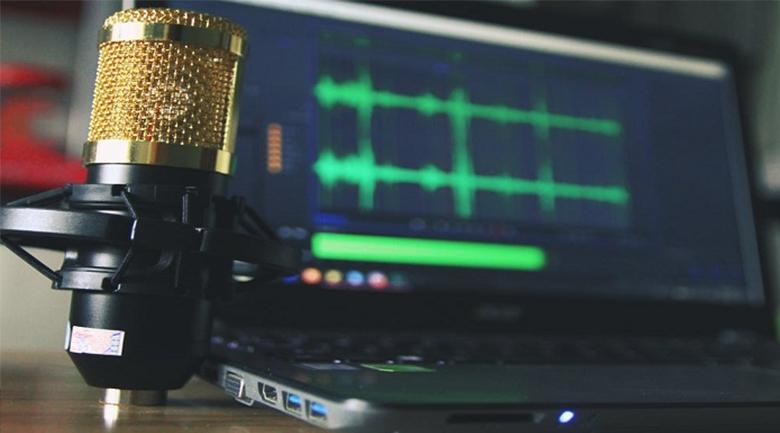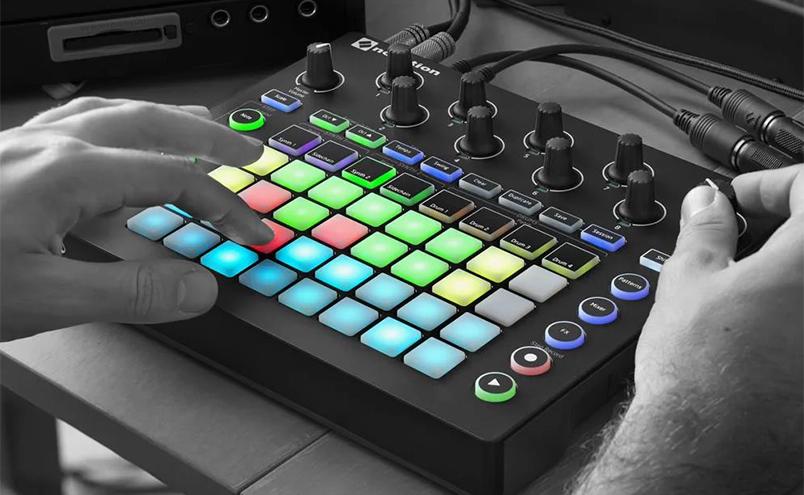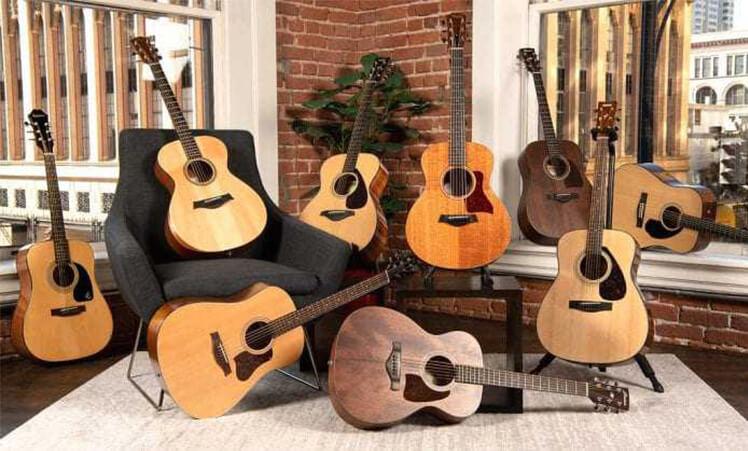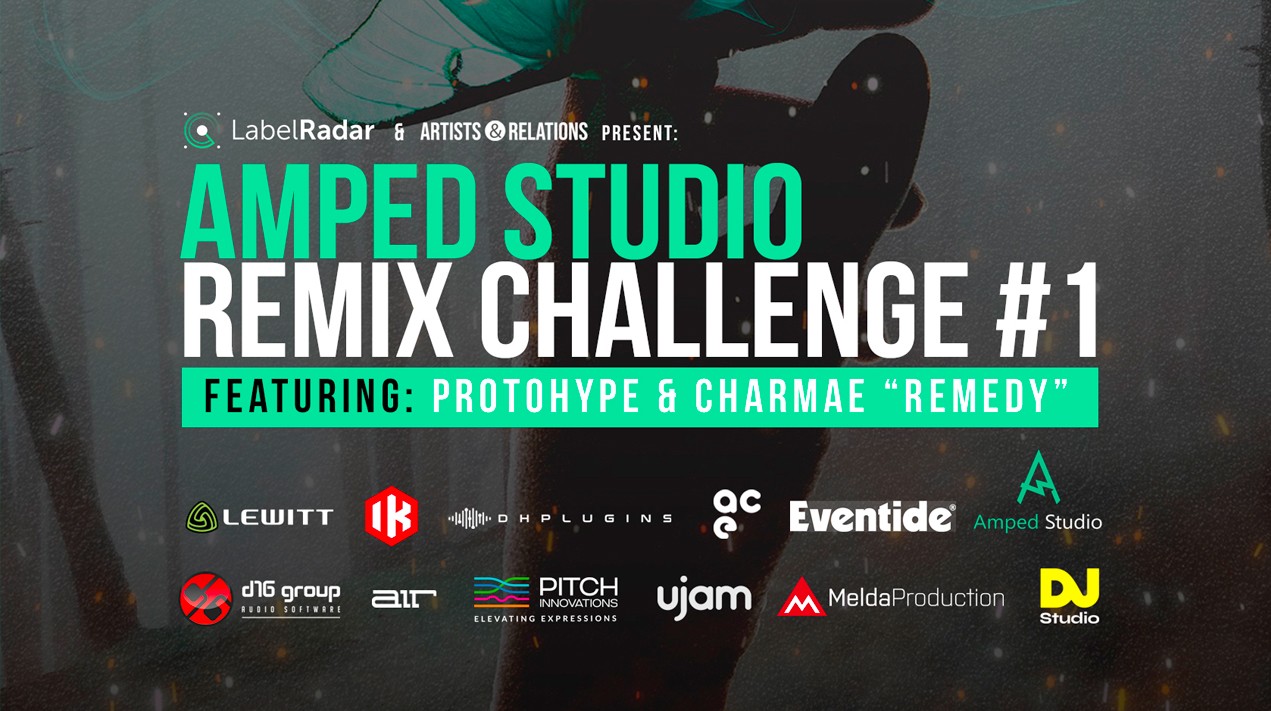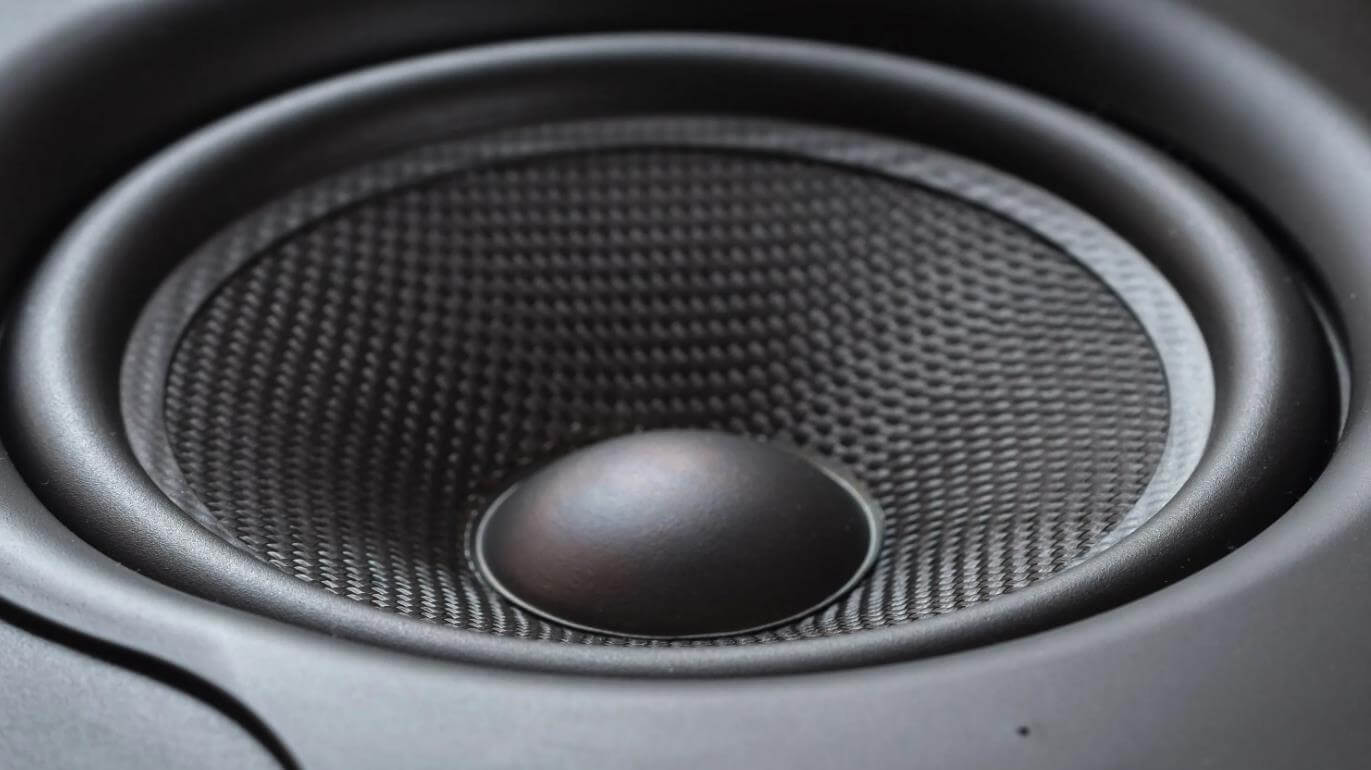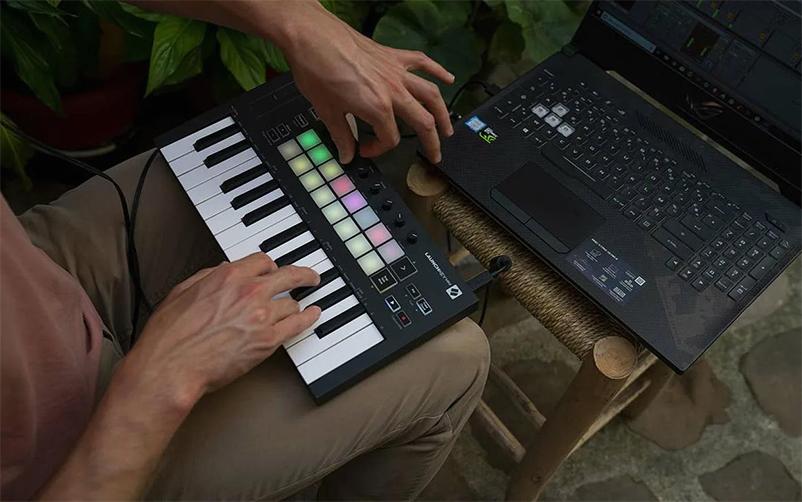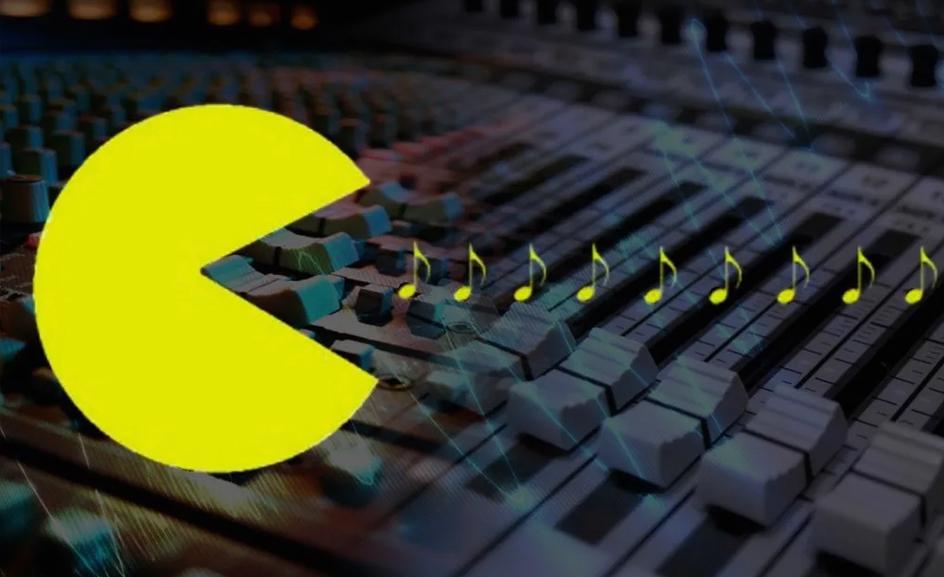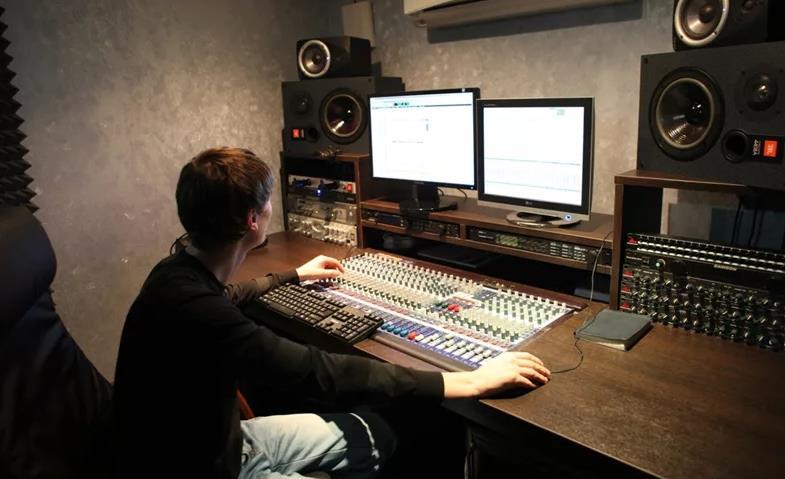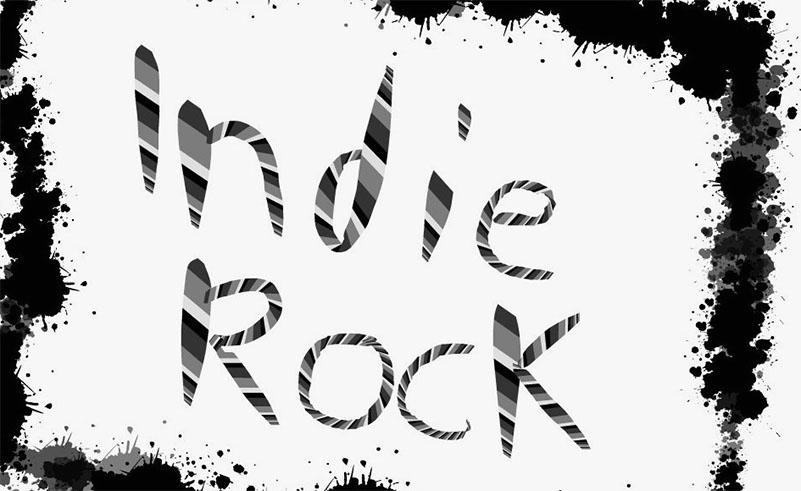Swing rhythm
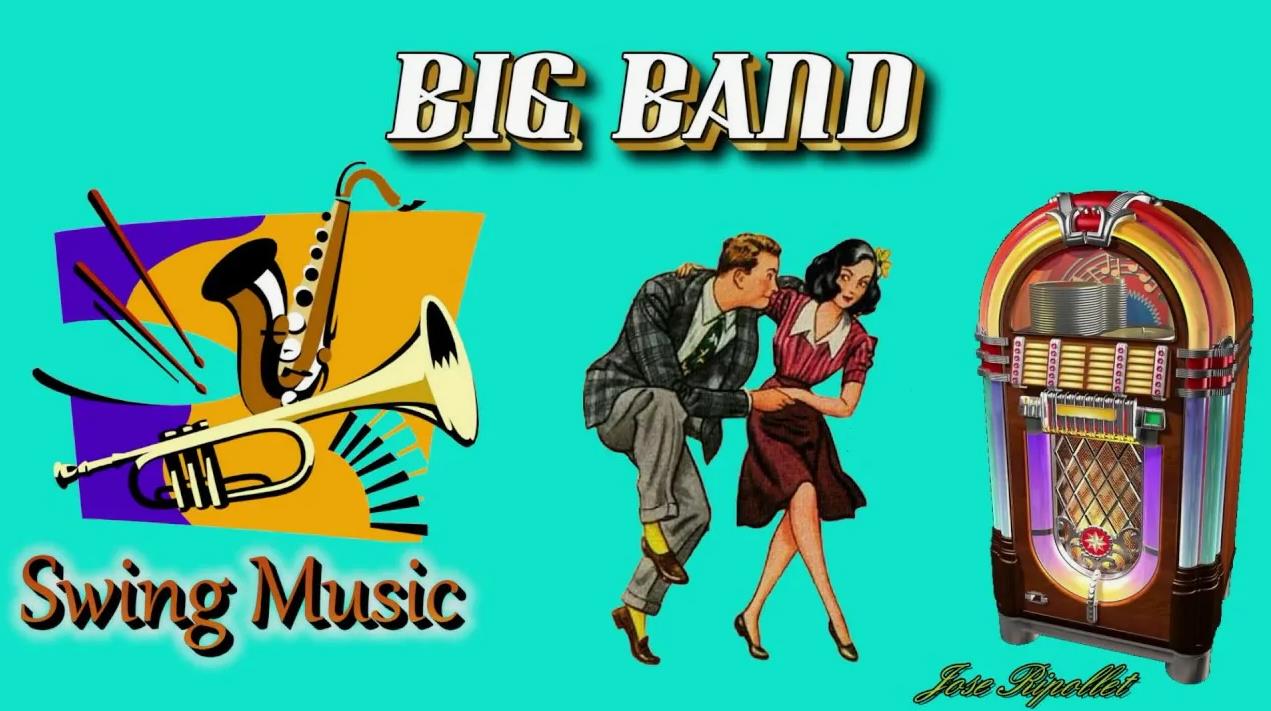
Swing is so deeply ingrained in jazz that in the 1930s, a whole subgenre called “swing” emerged, often featuring large jazz bands playing dynamic pieces. However, the rhythmic concept of swing has expanded beyond its jazz roots — today, elements of it can be found in modern genres like hip-hop and R&B, where swing rhythms find new expression.
Modern producers are actively using swing in their projects, experimenting with DAW settings and taking inspiration from beatmaking pioneers like J Dilla, who became famous for his electronic interpretations of swing. If you want to add some liveliness and rhythm to your tracks and get your listeners bobbing their heads to the beat, you should consider incorporating swing into your music.
In this article, we will look at the musical theory and history of swing, as well as share practical tips on how to use it in songwriting.
What is swing?
In music, swing is a specific interpretation of rhythm in which eighth notes are played with an emphasis on triplets, creating a galloping sound. The term also refers to a genre of early jazz that makes extensive use of this rhythmic style.
Swing and jazz are deeply intertwined – the term “swing” was coined by jazz musicians in the 1930s, and from then until the 1970s, most jazz music was performed in this style. Swing covers a wide range of jazz styles, from traditional New Orleans jazz to bebop.
Swing Music Theory
Understanding swing requires a little bit of music theory, especially the difference between eighth notes and triplet eighth notes. Although swing rhythms are usually written as eighth notes, they are actually played as triplets with an emphasis on the rest in between.


Simply put, swing notation establishes an equivalence between these two ways of conveying rhythm.
Swing emphasizes the backbeat
Swing is not just a rhythmic style. For example, Beethoven’s 9th Symphony also used rhythms similar to triplet eighth notes, but this music is not considered swing music. Instead, the triplets were played as dotted eighth notes and sixteenth notes, which creates a different feel that swing music does not convey.
In the second movement of the 9th Symphony, you can especially notice how the orchestra plays the triplets evenly and precisely. This creates a rhythmic structure that is different from the way jazz musicians interpret eighth notes, giving them a characteristic “swing”.
The main difference is in articulation and emphasis. Jazz players often emphasize the weak beat, emphasizing the second and fourth beats of the bar, which creates a swing effect. In classical music, the emphasis is usually placed on the first and third beats, which does not allow for the smooth and rhythmic “swing” characteristic of swing. So what makes swing music special? It uses specific rhythmic and articulatory techniques that create a unique feel and atmosphere that is characteristic of this subgenre of jazz.
Swing Rhythms
The term “swing” in music refers to the characteristic rhythms played by the drums, bassist, and other instruments in the ensemble. These rhythms treat eighth notes in a non-traditional manner, as triplets, giving the music a unique rhythmic pattern called swing.
Emphasis on beats 2 and 4
Like most jazz, swing music emphasizes the second and fourth beats of the bar, creating what is known as the “backbeat.” This rhythmic accent is a key element of swing, distinguishing it from more classic triplet structures, which typically emphasize the first and third beats.
Basslines
A constant bassline, played on the double bass or piano, sets the rhythmic foundation for the entire ensemble. This “walking” bass creates a steady beat against which improvisation unfolds.
Improvisation in Swing
As in other styles of jazz, swing often includes elements of improvisation, whether in vocal or instrumental parts. The call-and-response technique is often used, which adds liveliness and dynamics to the music.
On a technical level, there is no single correct way to play swing. The complex rhythms and shuffles in swing compositions are often difficult to accurately indicate on paper, and interpreting eighth notes as triplets is only one possible interpretation.
Understanding Triplets: Swing Rhythm
Understanding how to play and count triplets is fundamental to mastering the swing style. Many jazz players find that the easiest way to better understand the art of swing triplets is to pick a memorable rhythmic phrase rather than trying to understand the feel of swing from the notes.
One such phrase is “Chew to-bacca,” taken from the blues song Chew Tobacco Rag by Billy Briggs:
When Briggs sings “Chew to-bacca, Chew to-bacca” in the latter half of the chorus, you can get a good idea of how triplets are supposed to sound in swing music.
Mastering Triplets: The Swing Rhythm
To get into the swing style, it is important to learn how to play and count triplets. For many jazz musicians, the easiest way to remember the triplet rhythm is through catchy phrases, rather than trying to understand swing through the notes alone. One such example is the phrase “Chew to-bacca” from the blues song “Chew Tobacco Rag” by Billy Briggs. When Briggs sings this line in the chorus, it becomes easy to understand how triplets are supposed to sound in swing music.
Artistic interpretation of swing
The true swing rhythm is difficult to convey on notes, as it goes beyond the strict framework of musical theory. Playing swing is more a matter of interpretation and the musician’s personal style. When you learn to listen to swing, you will notice that different drummers interpret it in their own way, playing with accents and rhythmic pauses.
For example, the famous jazz drummer Art Blakey in his track “Moanin'” demonstrates classic swing with evenly spaced eighth notes. His playing fits perfectly into the swing rhythm. At the same time, another famous drummer Elvin Jones is known for his tight swing, where the quarter notes are shifted closer to sixteenth notes. His style sounds sharper and resembles straight sixteenth notes, almost like Beethoven!
If this confuses you, try comparing Elvin Jones’ “Half and Half” with Art Blakey’s “Moanin'” – both are played in a swing rhythm, but the drummers sound completely different, demonstrating a variety of swing interpretations.
Playing in the Cracks
This unique approach to swing rhythm originated in the bebop and hard bop eras. Drummers like Elvin Jones, who were masters of swing technique, played a specific style known as “playing in the cracks.” This term describes a performance that falls somewhere between a full swing and a full straight stroke. Today, the term is used by producers and performers to describe a specific style of playing.
Essentially, “playing in the cracks” means that the swing feel is created somewhere between triplet and straight eighth notes.

So, a cracked rhythmic groove would be somewhere between traditional swing and straight eighth notes. If you ask a drummer to play cracked, you mean that his playing should be somewhere between steady and swing rhythms. This style requires a lot of skill and many hours of practice to achieve the desired sound.
Cracked Style Influence on Hip-Hop
Producers like J Dilla and modern drummers like Chris Dave and Karriem Riggins have taken inspiration from jazz drumming traditions and brought a fresh vibe to hip-hop. Dilla was a master at creating cracked hip-hop beats, which became his signature sound.
Riggins and Dave, Dilla’s successors, reinterpret familiar hip-hop rhythms by adding unconventional, unexpected snare drum hits that, despite their unevenness, retain a robotic and straightforward character. Creating a swing sound that will sound harmonious is an art, and modern jazz drummers are paying close attention to honing this new approach to swing and hip-hop grooves.
An example of Dave’s work demonstrates his ability to keep the beat precisely, which makes his playing special. It confirms that drummers are choosing to make their own unique sound, turning swing into an art.
Swing in Electronic Music: House, Techno, and Breakbeat
Swing has found its way into electronic music, influencing the rhythmic patterns of genres such as house, techno, and breakbeat. The swing influence adds a unique human touch and danceable groove to mechanical, precise rhythms.
In house music, swing is used to create syncopated rhythms, where the bobbing hi-hats and snare drums add interest to the steady 4/4 beat of the bass drum, enhancing the danceable nature of the genre. A classic example is Kerry Chandler’s “Atmosphere,” where the swing creates an exciting interplay between the percussive elements.
In techno, swing is applied more subtly, often focusing on the hi-hats, shakers, or other percussive elements to create dynamic movement in the track. An example is Jeff Mills’ “The Bells,” which demonstrates how swing can add depth and texture to techno music.
Breakbeat, which has its roots in hip-hop, makes heavy use of sampled funk drums, giving the genre its own distinctive drum sound. Syncopated rhythms, like in “Break & Enter” by The Prodigy, show how swing can create an energetic and rhythmically rich sound.
To add swing to your electronic tracks, you can experiment with the swing or groove settings in your DAW. Adjusting the swing percentage can change the rhythmic feel and add new colors to your compositions. Remember to find a balance between mechanical precision and lively human playing to give your tracks life and energy.
How to Master Swing Rhythms
If you want to learn how to play swing rhythms, the best way is to practice. Listen to, play along with, and even try to transcribe the works of great jazz and blues musicians. Art Blakely’s track mentioned earlier is great for improvisation, as its shuffle rhythm fully conveys the character of swing.
Here are three tips to help you master swing rhythms:
1. Chew tobacco
There’s a jazz joke that goes, “Why don’t bluesmen smoke cigarettes? Because they like to chew tobacco, chew tobacco, chew tobacco.” The joke plays on the swing eighth-note rhythm, where the emphasis on the “bakkah” emphasizes the unevenness of the rhythm. So next time you try to swing, repeat this phrase to yourself. By the way, tobacco is bad for your health, so use the phrase for the rhythm, but don’t take it literally!
2. Spang-a-lang
“Spang-a-lang” is an expression drummers use to describe the basic swing rhythm on the ride cymbal. If you ask a drummer to play “spang-a-lang,” he’ll know right away what you mean. Try playing this rhythm and its variations on the ride cymbal and adding fills on the snare and bass drum.

3. Practice Backbeat Accented Triplets
If swing is difficult for you, go back to the basics and practice clapping or playing triplets. The best way to master swing triplets is to accent the second and fourth beats in a 4/4 time.
Dancing to the Swing Rhythm
Swing music has an important place in modern music culture, being the foundation of rhythm in genres such as jazz and blues. These genres, in turn, gave birth to rock and roll, R&B and hip-hop. Therefore, it is important for musicians and producers to study, understand and feel the swing rhythms to enrich their playing, songwriting and music production.
Now that you know a little more about the history of swing and have an idea of how to study it, find some jazz records and immerse yourself in the swing mood that inspires you!
Frequently Asked Questions About Swing Music
If you are still having trouble understanding swing rhythms, here are some frequently asked questions that may help expand your understanding:
What is swing jazz?
Swing generally refers to a specific rhythmic mood in jazz music where eighth notes are interpreted as triplets, creating a characteristic galloping rhythm.
What is swing feel?
Swing feel is a jazz technique of interpreting rhythm where eighth notes are played as triplets, creating a unique groove known as swing.
What is the difference between swing and jazz?
Swing music is a subgenre of jazz that is often characterized by its expressive rhythmic quality and big band performance. Jazz, in turn, is a broader category that includes many subgenres.
Swing music continues to have a significant influence on modern musical styles. Even if the genre itself is no longer as common, its elements have become an integral part of the new era of groove-oriented music.


